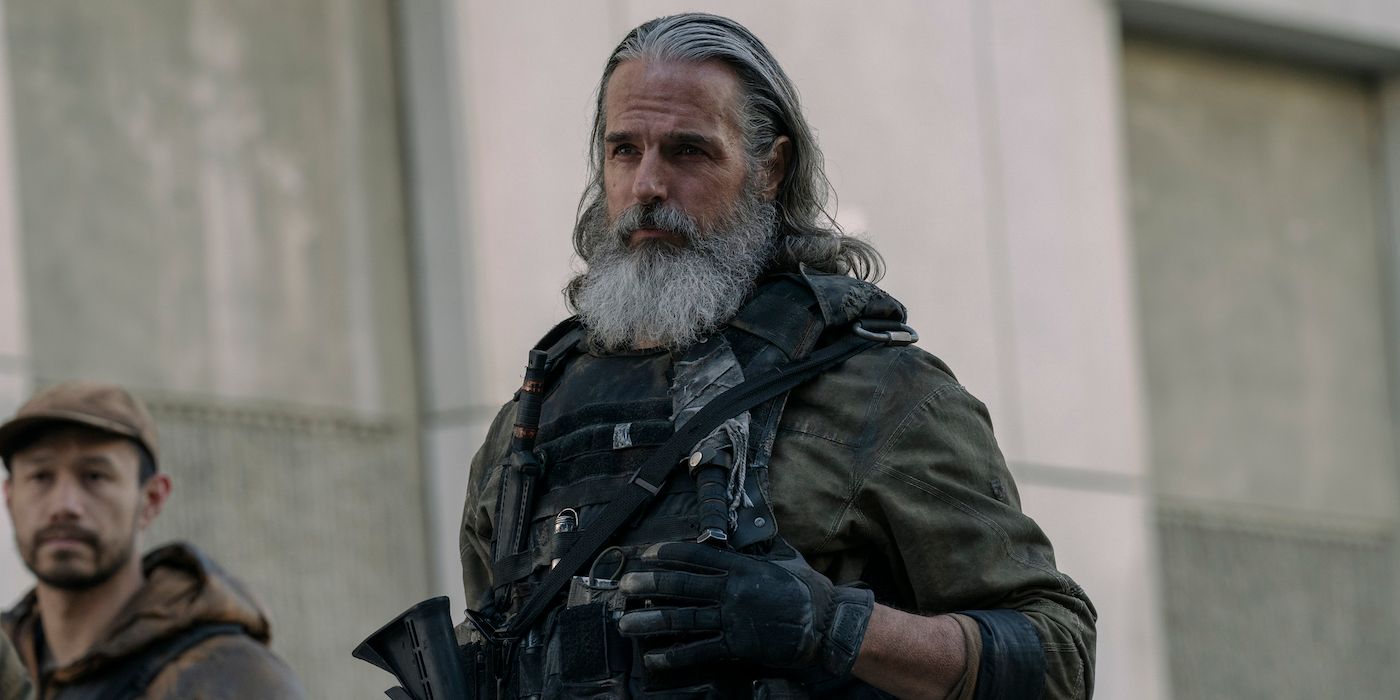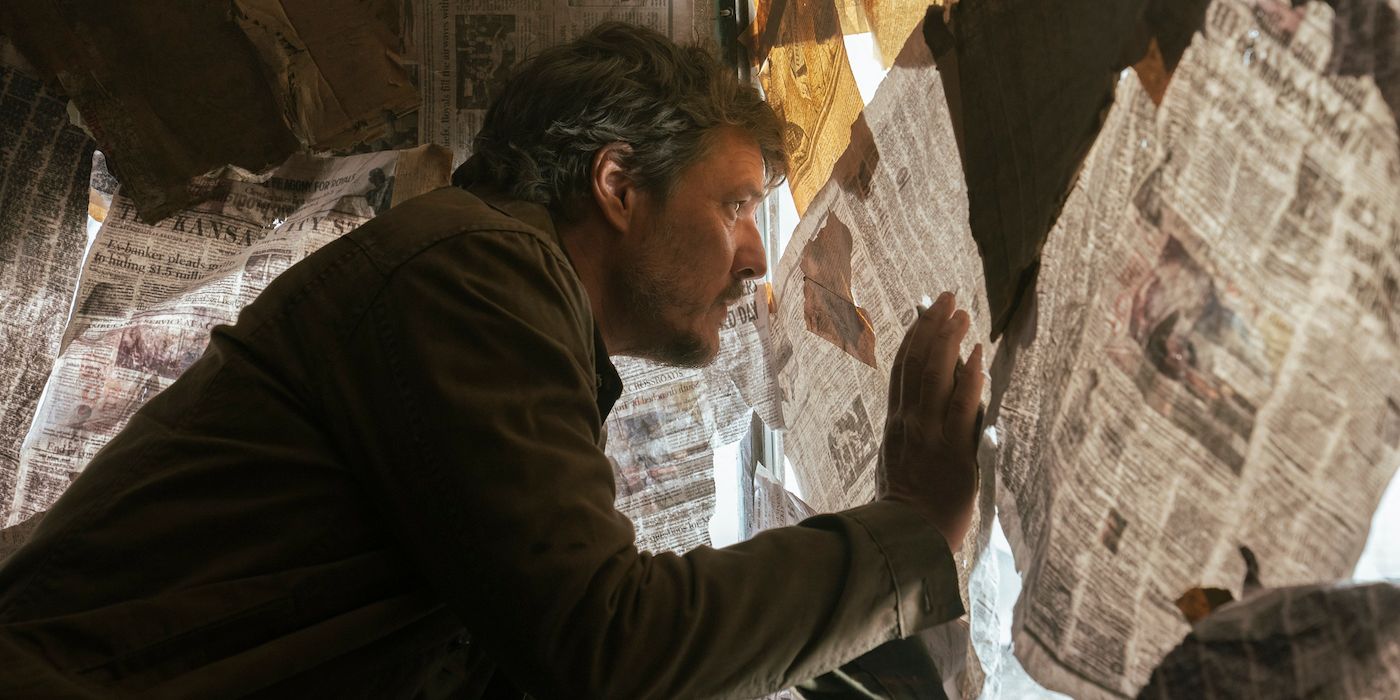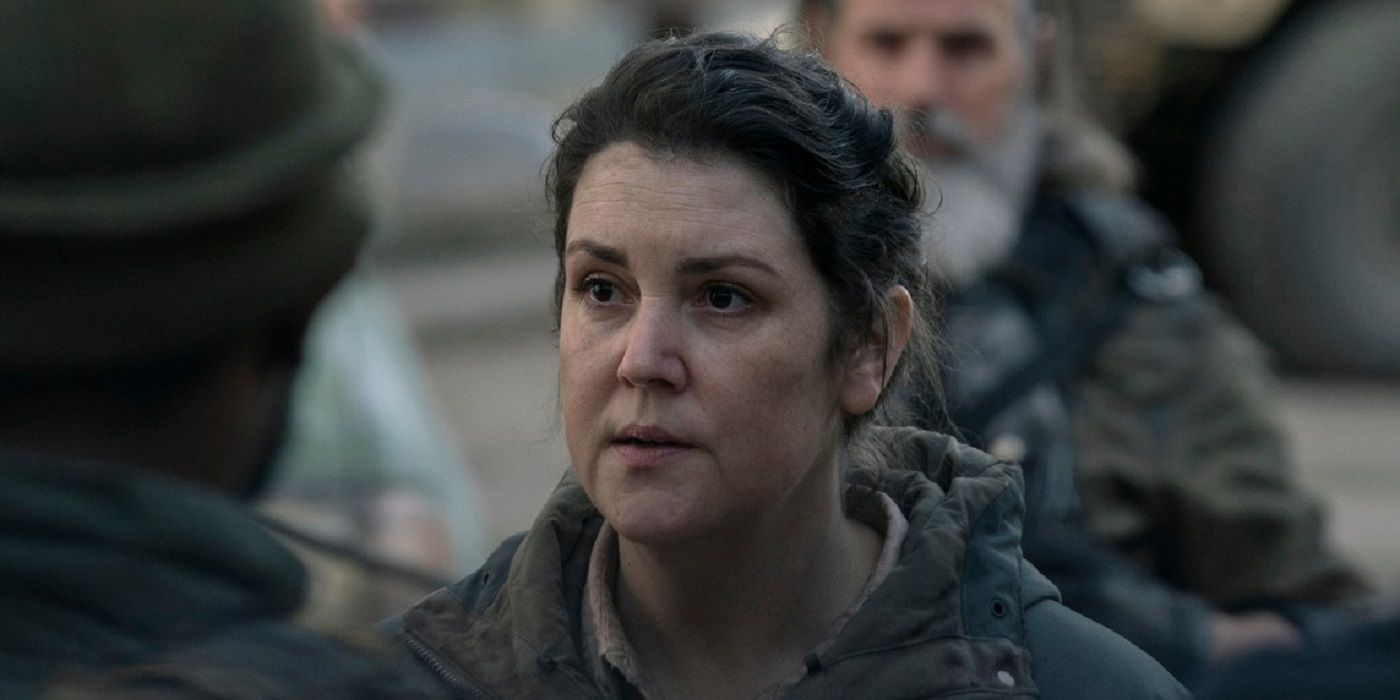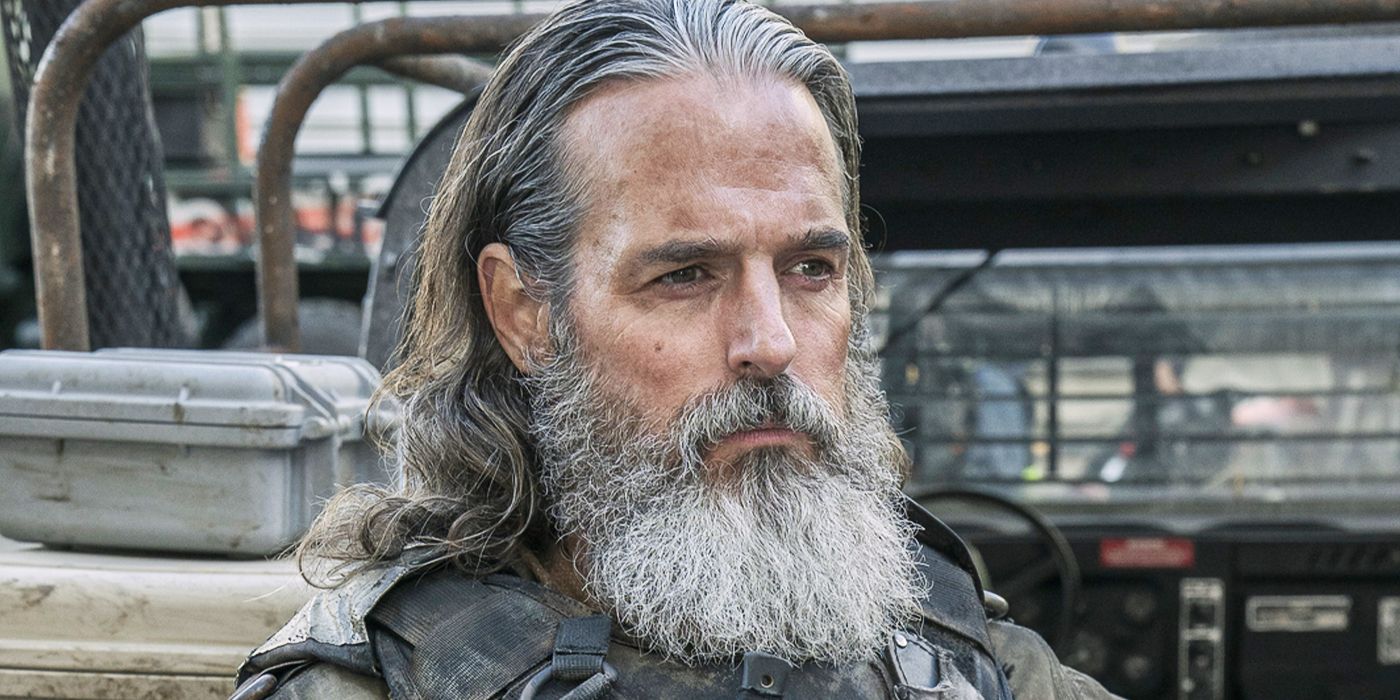Editor's Note: The following contains spoilers for The Last of Us Episode 4. With each new episode of The Last Of Us comes more new characters and more new enemies. As Joel (Pedro Pascal) and Ellie (Bella Ramsey) leave the East Coast behind on their journey to reach Joel’s brother Tommy (Gabriel Luna), we begin the portion of the story where humans are just as much (if not more) of a threat than the infected. Joel and Ellie have long left behind the relative security of Quarantine Zones and reliable allies, instead embarking on a massive journey neither of them are prepared for. As they reach unfamiliar territory new factions emerge, including the game’s second most common enemy class: raiders. Raiders are a human class of adversaries that usually operate in groups but despite their being human, the first game does little to make us think about the people we’re mowing down. Episode 4 of HBO’s adaptation takes a different approach, making efforts to humanize these characters and make them distinct from the infected that threaten all that remains of humanity.
From Mobs To Characters, Raiders Are Common in the Game
As stated, raiders are an enemy type in the game. They’re encountered mostly near settlements or in cities and tend to work with more comradery than the mindless hordes of infected. But other than that they don’t have much distinction from the infected at all. They speak while you’re in encounters with them, but there’s no opportunity to barter or understand, you’re incentivized to kill them with just as much impunity as you apply to the zombies. They don’t have a cohesive front, we don’t know their motivation, and since they’re attacking Joel and Ellie just like the infected, we dispose of them in the same way. We don’t get to know them as people within the game, so we treat them only as enemies. By showing us more of this enemy type, giving them scenes to themselves, emotions, and a clear sense of history to their struggle, we’re automatically able to view them in a more complex light. The raiders are still enemies, they still pose the same threat to Joel and Ellie as they did originally, but the show goes out of its way to dissuade our quick trigger fingers.
Episode 4 introduces us to the raiders first through their ambush on Joel and Ellie. This plays out much in the same way to the game with the change of having the raiders address each other like people and having one of them beg for his life before Joel has to finish him off. These choices in particular seem reminiscent of The Last Of Us Part II where enemies were given dialogue and pained reactions during combat to make them feel more human. This functions much the same way in the show, making us draw back from viewing these encounters as something you can “win” and instead understanding the toll of each death on the characters. It complicates our feelings as an audience because obviously we like Joel and Ellie and don’t want anything bad to happen to them but at the same time we can understand, to an extent, what it’s like to be on the other side. Joel even later says he’s been on both sides of that ambush before further clarifying that these encounters, from both sides, are more about survival than morality.
People Are Still People in The Last of Us TV Show
Another minor tweak that addresses gameplay was the decision to make Kathleen (Melanie Lynskey) our main focus while we get to know this group of adversaries. (And not just because it addresses how all the character models for raiders in the original game were male). Not only does this help us see these characters in a more complex light as we see both her struggle with the decisions she has to make, but we also come to understand there’s a deep history of loss and strife in Kansas City in the aftermath of the QZ falling. Seeing how these characters built a life for themselves outside FEDRA’s control helps us sympathize with them because we’ve seen not just how tough life was in the Boston QZ but heard multiple tales of other QZs falling and the cities going silent entirely like with the Baltimore QZ. From this alone, we know these people are resilient. And from how we see Kathleen willing to spare the doctor if it means he can save one of her own, we know her intentions are not malicious.
She only holds ill will against him in the first place because she believes the doctor was involved in the death of her brother; it’s far from a petty dispute. There’s some bad blood here between her people, FEDRA, and Henry (Lamar Johnson) though what exactly it is not clear yet. Giving these characters context, understanding what life was like in a QZ, and watching them grieve for each other sets them apart from the NPCs you mow down in the game by miles. These are not people acting maliciously and without motivation, they are paranoid people trying to survive. It’s easy to see how Kathleen is acting out of a necessity to protect her people, even if she goes about it in an antagonistic way. “Shoot first, ask questions later” has been Joel’s MO the whole time, we’re just experiencing it from the other side with the raiders.
Though we still don’t know much about the raiders' background, it’s clear that how they are portrayed in the show is a far cry from how they are in the game. Kathleen and her people have tried to kill Joel and Ellie; they are a hostile-armed force. But they’re still human and HBO’s The Last Of Us is going out of its way even more so than the game to show us that even these characters who’ve done terrible, regrettable things are still people just like our heroes. It’s clear that Kathleen and her militarized group are paranoid and eager to protect their own, just like Bill (Nick Offerman), just like Joel. These scenes help to show that, despite being in conflict with each other, these human characters have far more in common than not.
The Show Changes the Way the Game Frames and Uses Raiders
The change in framing to show the audience more about Kathleen and her crew functions similarly to how seeing Frank (Murray Bartlett) and Bill on their own helped to build out the world more, or how the flashbacks to outbreak day give us a glimpse of other people's perspectives on things. It helps to remind us that even though this is a story, it’s one about the nature of humanity and that dictates that its human characters, even the ones we don’t like, be treated like people. It stops viewers from internalizing the us-versus-them mentality that’s easy to fall into while playing video games and instead directs us to think more deeply about characters opposing moralities.
Kathleen and her crew are still largely unknown but giving her and her crew voices of their own stops us from seeing them as mindless mob characters. It not only helps us understand what they have at stake in this but also to better understand the cost of the confrontations the raiders have with Joel and Ellie. It’s one thing to mow down a group of assailants yelling taunts and firing at you willy-nilly, it’s a different thing entirely to strike someone down while they beg for their mother. Giving the raiders a human face isn’t just to their benefit, it also helps us understand the toll these confrontations take on Joel and Ellie. The inclusion of Kathleen and the rest of her group speaks to the humanism that runs throughout The Last Of Us as a whole, painting people as communal and reactive rather than outright diabolical.
The infected that destroyed the world are the common enemy, but the factions and distrust abundant in the remnants of humanity are entirely man-made. Episode 4 of The Last Of Us has elevated the raiders from being simply another enemy class. It gives us a broader context that help us to see beyond their stock opponent origins, giving them cohesion and humanity that give both us and the other characters pause before taking action against them. Though conflict is inevitable in the world of The Last Of Us, the threads of humanity and connection that weave the story together are more present than ever.




